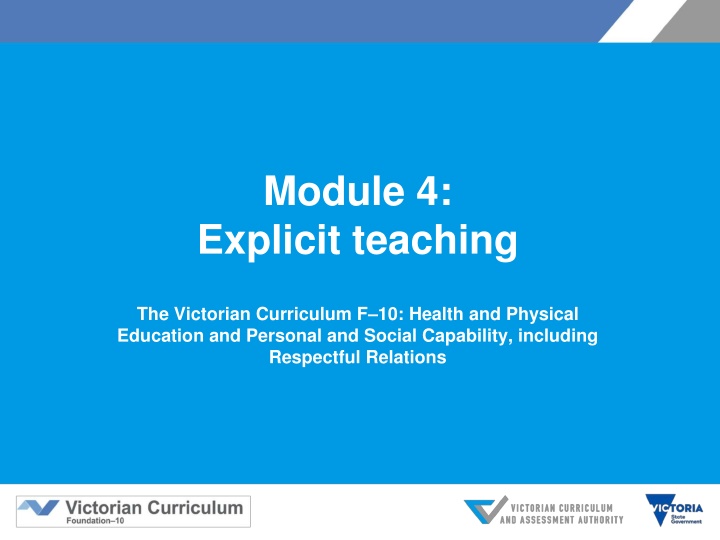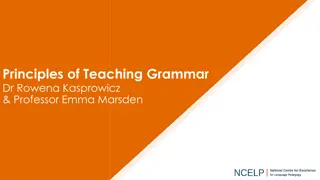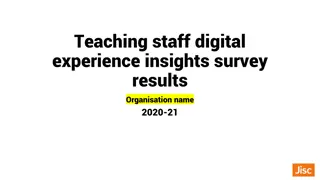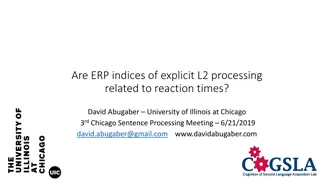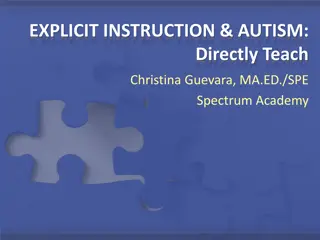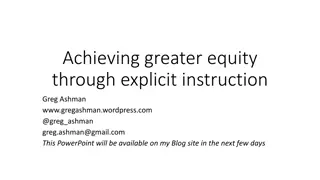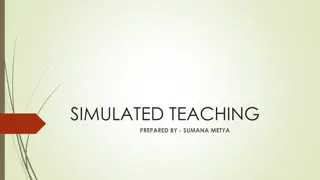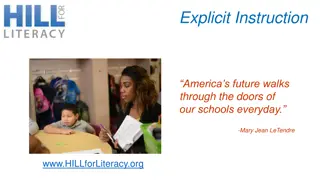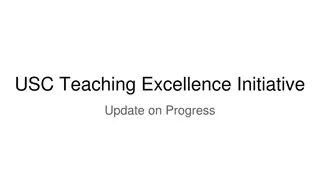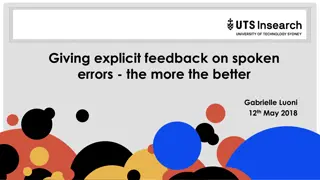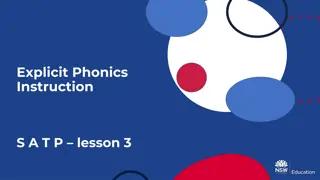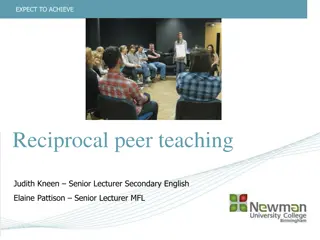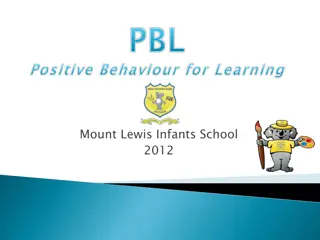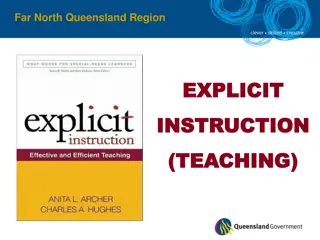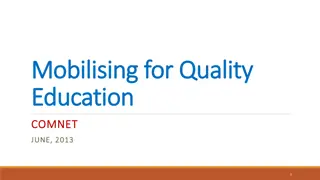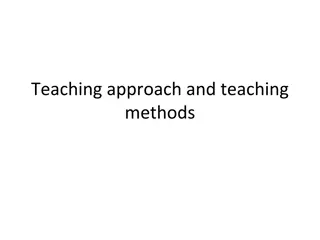Explicit Teaching in Education
Explicit teaching in education refers to teacher-centered instruction focusing on clear goals and outcomes. It involves making these goals transparent to learners, developing social and emotional skills, and providing opportunities for practice. Effective programs go beyond information-giving to teach interpersonal skills like communication, negotiation, time management, and conflict resolution. Goal-setting and clear examples help guide students in their learning journey.
Download Presentation

Please find below an Image/Link to download the presentation.
The content on the website is provided AS IS for your information and personal use only. It may not be sold, licensed, or shared on other websites without obtaining consent from the author.If you encounter any issues during the download, it is possible that the publisher has removed the file from their server.
You are allowed to download the files provided on this website for personal or commercial use, subject to the condition that they are used lawfully. All files are the property of their respective owners.
The content on the website is provided AS IS for your information and personal use only. It may not be sold, licensed, or shared on other websites without obtaining consent from the author.
E N D
Presentation Transcript
Module 4: Explicit teaching The Victorian Curriculum F 10: Health and Physical Education and Personal and Social Capability, including Respectful Relations
What is explicit teaching? In the field of education, explicit instruction refers to teacher-centred instruction that is focused on clear behavioural and cognitive goals and outcomes. These in turn are made explicit or transparent to learners.
Capabilities developed practised deployed demonstrated
HPE Curriculum shaped by five interrelated propositions: focuses on educative outcomes takes a strengths-based approach values movement develops health literacy skills includes a critical inquiry approach
Personal and Social Capability The Personal and Social Capability describes social and emotional learning as discrete knowledge, understandings and skills, rather than a statement of pedagogy. Successful social and emotional learning programs move beyond giving information to explicitly teaching and providing opportunities for students to practise interpersonal skills.
For example, just because a student completes a task as part of the team, this does not mean that they acquire the knowledge, understandings and skills necessary to work collaboratively with others.
The knowledge, understandings and skills for working collaboratively include: 1. communication 2. negotiation 3. time management 4. conflict resolution All need to be explicitly taught and assessed.
? ? ? ? So, how do I do this?
Goal setting be clear about what you want students to know and do. This may be the learning intention for each lesson Show and tell provide examples for students telling, sharing, role model, video clips Practice - guided by you or working with other students - check the practice and provide feedback - independent practice and demonstration - assessment
I do We do You do
Scenarios The use of scenarios enables students to develop and practise responses to a range of situations. Working together enables students to learn a range of strategies that they could use to resolve situations.
Role-plays Role-plays enable students to practise their responses to a variety of situations. Without practice, the application of strategies is difficult. We ve all said we ll do something in a situation, but then often don t. Make sure content is looked at not presentation.
Help seeking What might you teach?
What is the problem? Who could you go to for help? Would it be helpful if a friend went with you? Or someone else? How do I make time with the person I would like help from? What do I say?
Explicit teaching requires in-depth lesson plans with clear goals that are evident to students. Role modelling, shared experiences and guided practice all contribute to students developing the ability to individually demonstrate knowledge and skills.
